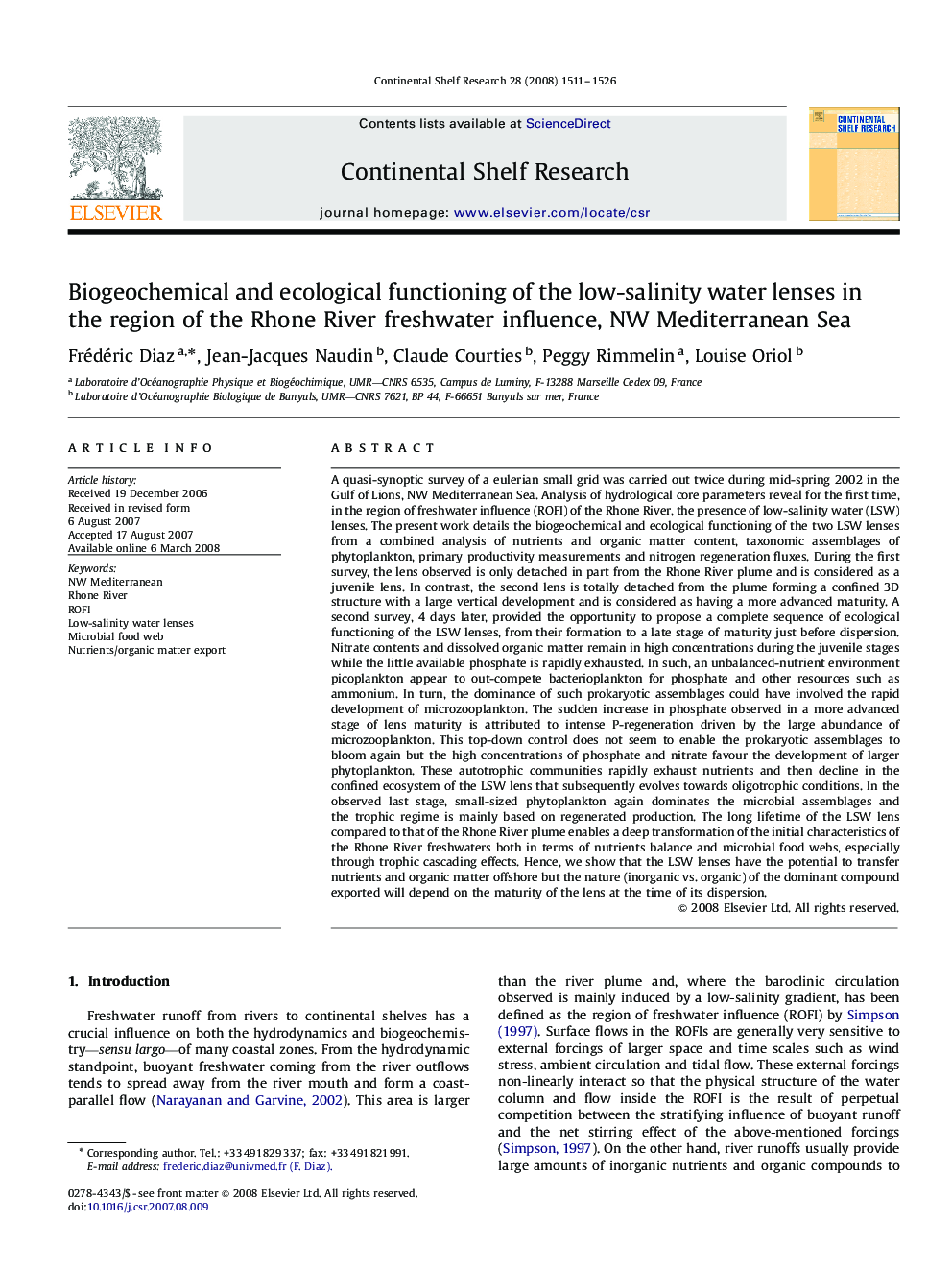| Article ID | Journal | Published Year | Pages | File Type |
|---|---|---|---|---|
| 4533577 | Continental Shelf Research | 2008 | 16 Pages |
A quasi-synoptic survey of a eulerian small grid was carried out twice during mid-spring 2002 in the Gulf of Lions, NW Mediterranean Sea. Analysis of hydrological core parameters reveal for the first time, in the region of freshwater influence (ROFI) of the Rhone River, the presence of low-salinity water (LSW) lenses. The present work details the biogeochemical and ecological functioning of the two LSW lenses from a combined analysis of nutrients and organic matter content, taxonomic assemblages of phytoplankton, primary productivity measurements and nitrogen regeneration fluxes. During the first survey, the lens observed is only detached in part from the Rhone River plume and is considered as a juvenile lens. In contrast, the second lens is totally detached from the plume forming a confined 3D structure with a large vertical development and is considered as having a more advanced maturity. A second survey, 4 days later, provided the opportunity to propose a complete sequence of ecological functioning of the LSW lenses, from their formation to a late stage of maturity just before dispersion. Nitrate contents and dissolved organic matter remain in high concentrations during the juvenile stages while the little available phosphate is rapidly exhausted. In such, an unbalanced-nutrient environment picoplankton appear to out-compete bacterioplankton for phosphate and other resources such as ammonium. In turn, the dominance of such prokaryotic assemblages could have involved the rapid development of microzooplankton. The sudden increase in phosphate observed in a more advanced stage of lens maturity is attributed to intense P-regeneration driven by the large abundance of microzooplankton. This top-down control does not seem to enable the prokaryotic assemblages to bloom again but the high concentrations of phosphate and nitrate favour the development of larger phytoplankton. These autotrophic communities rapidly exhaust nutrients and then decline in the confined ecosystem of the LSW lens that subsequently evolves towards oligotrophic conditions. In the observed last stage, small-sized phytoplankton again dominates the microbial assemblages and the trophic regime is mainly based on regenerated production. The long lifetime of the LSW lens compared to that of the Rhone River plume enables a deep transformation of the initial characteristics of the Rhone River freshwaters both in terms of nutrients balance and microbial food webs, especially through trophic cascading effects. Hence, we show that the LSW lenses have the potential to transfer nutrients and organic matter offshore but the nature (inorganic vs. organic) of the dominant compound exported will depend on the maturity of the lens at the time of its dispersion.
